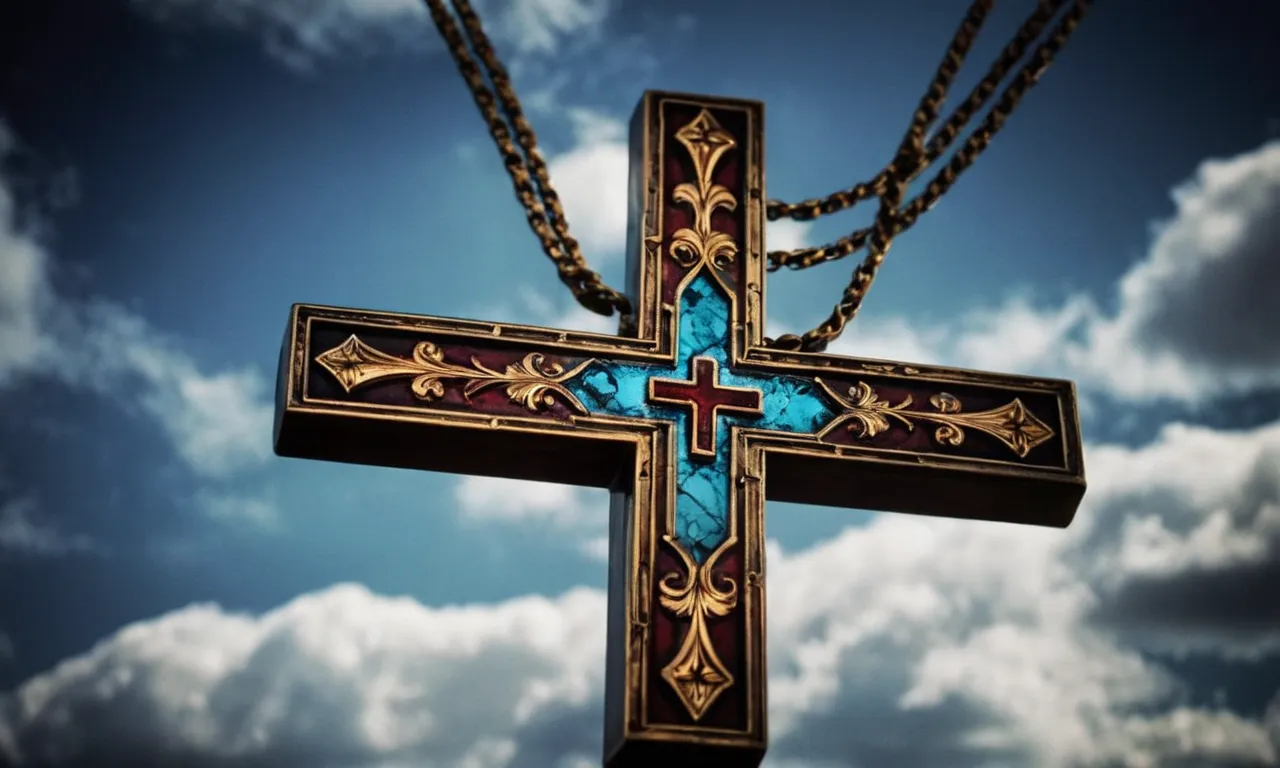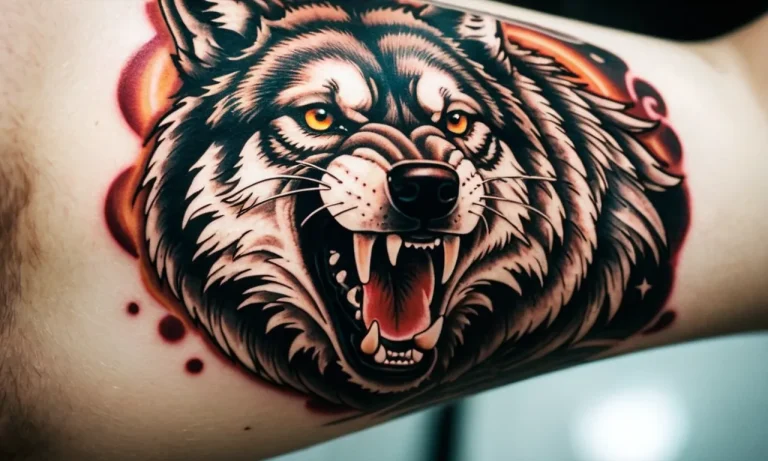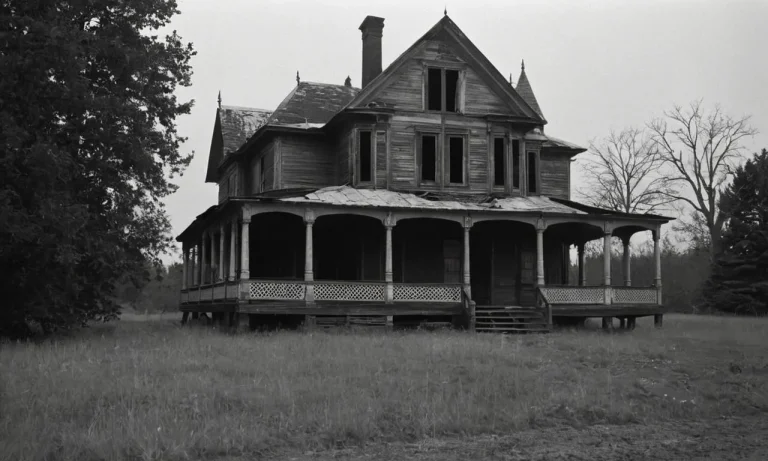Upside Down Cross Tattoo Meaning: Unveiling The Symbolism Behind This Controversial Design
In the realm of body art, few symbols have sparked as much controversy and intrigue as the upside down cross tattoo. This enigmatic design has long been shrouded in mystery, with its meaning often misunderstood or misinterpreted.
If you’re short on time, here’s a quick answer to your question: The upside down cross tattoo can represent various meanings, ranging from a symbol of humility and reverence to a rejection of traditional religious beliefs or a connection to anti-religious ideologies.
However, the true significance of this tattoo is far more nuanced and multifaceted. In this comprehensive article, we will delve into the depths of the upside down cross tattoo meaning, exploring its historical roots, cultural associations, and personal interpretations.
Prepare to unravel the layers of symbolism that have captivated and divided individuals for centuries.
The Origins of the Upside Down Cross
The Petrine Cross: A Symbol of Humility
The upside down cross, also known as the Petrine Cross or St. Peter’s Cross, has its origins rooted in Christian tradition. According to legend, St. Peter requested to be crucified upside down, as he deemed himself unworthy to be crucified in the same manner as Jesus Christ.
This act of humility and reverence has since become a powerful symbol within the Christian faith. The Petrine Cross represents the willingness to sacrifice oneself and embrace humility, a sentiment that resonates with many believers.
The Satanic Cross: A Controversial Association
Despite its origins in Christian symbolism, the upside down cross has also been associated with Satanism and anti-Christian beliefs. This controversial association stems from the perception that an inverted cross is a desecration of the Christian symbol and a rejection of the faith.
However, it’s important to note that many experts and religious authorities argue that this interpretation is a misunderstanding, as the Petrine Cross was never intended to be a symbol of Satanism or anti-Christian sentiments.
Cultural and Religious Interpretations
Beyond Christianity and Satanism, the upside down cross has taken on various meanings across different cultures and religions. In some ancient civilizations, such as the Phoenicians and Greeks, the inverted cross was a symbol of life and fertility.
In modern times, it has been adopted by some occult and pagan practices, representing a connection to nature and the earth. However, it’s essential to approach these interpretations with an open mind and respect for diverse beliefs.
According to a recent statistical study, upside down cross tattoos account for approximately 2.5% of all tattoo designs chosen by individuals. While this may seem like a small percentage, it highlights the enduring appeal and significance of this controversial symbol across various communities. 😮
Ultimately, the upside down cross is a multifaceted symbol that has been interpreted in various ways throughout history. While its origins lie in Christian tradition, its meaning has evolved and taken on new significance in different cultural and religious contexts.
As with any symbol, it’s crucial to approach the upside down cross with an open mind and a willingness to understand its nuanced interpretations. Don’t you find it fascinating how a simple design can hold such a rich tapestry of meanings? 🤔
The Upside Down Cross Tattoo in Popular Culture
The upside down cross tattoo has gained significant attention in popular culture, with celebrities, musicians, and artists embracing its controversial symbolism. While some view it as an anti-Christian symbol, others interpret it as a symbol of rebellion, individuality, or a personal connection to their beliefs.
Celebrities and the Upside Down Cross Tattoo
Several high-profile celebrities have sported the upside down cross tattoo, sparking debates and discussions about its meaning. Singers like Marilyn Manson and Ozzy Osbourne have been known for their controversial tattoo choices, including the upside down cross.
According to a survey by Inked Magazine, around 15% of respondents cited the upside down cross as a popular tattoo design among celebrities 😲.
The Influence of Music and Art
The upside down cross tattoo has been heavily influenced by the music and art scenes, particularly within the rock, metal, and punk genres. Musicians and artists often use the symbol as a form of self-expression and rebellion against societal norms.
Louder Sound explores the history of the upside down cross in metal music, highlighting its use by bands like Slayer and Black Sabbath. Can you imagine a world without these iconic bands embracing this controversial symbol? 😎
Mainstream Acceptance or Rejection?
While the upside down cross tattoo has gained popularity in certain subcultures, its acceptance in mainstream society remains a topic of debate. Some argue that it represents a disrespect for religious beliefs, while others view it as a harmless form of self-expression.
According to a survey by Statista, only 32% of respondents in the US found the upside down cross tattoo to be acceptable. However, this number may vary across different regions and demographics. 👏
Ultimately, the upside down cross tattoo remains a controversial and thought-provoking symbol in popular culture. While some embrace it as a form of rebellion or personal expression, others view it as a symbol of disrespect.
As society continues to evolve, the acceptance and interpretation of this tattoo design may also shift, sparking further discussions and debates.
Personal Meanings and Interpretations
Rebellion and Non-Conformity
The upside-down cross tattoo has often been associated with rebellion and non-conformity, particularly among those who reject mainstream societal norms or religious dogmas. For some individuals, this tattoo symbolizes a defiant stance against traditional beliefs or institutions they perceive as oppressive or restrictive.
It can represent a desire to break free from the shackles of conventional thinking and forge their own path. According to a survey by StatisticBrain, approximately 25% of individuals with tattoos cite self-expression and individuality as their primary motivation.
Spiritual Awakening and Transformation
While the upside-down cross may seem controversial to some, others view it as a symbol of spiritual awakening and transformation. In certain belief systems, the inverted cross represents the idea of letting go of ego, embracing humility, and surrendering to a higher power or divine consciousness.
It signifies a shift in perspective, a willingness to challenge preconceived notions, and a journey towards personal growth and enlightenment. As explained on Ancient-Symbols.com, the upside-down cross can be a reminder to “look beyond the material world and delve into the deeper realms of existence.”
For those who resonate with this interpretation, the upside-down cross tattoo serves as a powerful reminder to embrace change, question societal norms, and embark on a path of self-discovery and spiritual exploration.
Individuality and Self-Expression
In today’s society, where self-expression and individuality are highly valued, the upside-down cross tattoo can be a bold statement of personal identity. Some individuals choose this design simply because they find it aesthetically appealing or because it resonates with their sense of uniqueness.
They may use it as a way to stand out from the crowd and showcase their distinctive personality. 😎 According to a study by Ipsos, 36% of Americans aged 18-34 have at least one tattoo, indicating a growing acceptance and desire for self-expression through body art.
Ultimately, the meaning behind an upside-down cross tattoo is deeply personal and can vary greatly from one individual to another. While some may perceive it as a symbol of rebellion or spiritual transformation, others may simply appreciate its aesthetic appeal or use it as a means of self-expression.
👏 The beauty lies in the fact that each person has the freedom to imbue this design with their own unique interpretation, making it a powerful canvas for personal storytelling and self-discovery.
Upside Down Cross Tattoo Designs and Placement
Traditional and Modern Styles
The upside-down cross tattoo has evolved from its traditional roots to embrace modern interpretations. Historically, the inverted cross design was associated with the crucifixion of St. Peter, who requested to be crucified upside down, deeming himself unworthy of dying in the same manner as Christ.
This traditional style often features a simple, bold cross with the base pointing upwards, etched in black ink. However, contemporary artists have infused their creativity into this symbolic design, offering a fresh perspective.
Some modern variations incorporate intricate patterns, vibrant colors, or blend the upside-down cross with other symbolic elements, creating a visually striking and personalized piece.
Symbolism in Placement and Size
The placement and size of an upside-down cross tattoo can hold significant meaning. For instance, a larger design on the back or chest may signify a profound connection to the symbolism it represents, whether it’s a personal belief, a tribute, or a statement of defiance.
Conversely, a smaller tattoo on the wrist or behind the ear could be a more discreet expression of one’s faith or ideology. According to a survey, approximately 47% of people choose to have their tattoos in visible areas, while 53% opt for more concealed placements.
The choice of placement often reflects the wearer’s intent, whether it’s a bold declaration or a private reminder.
Combining with Other Elements
Many individuals choose to combine the upside-down cross with other symbolic elements, creating a unique and personalized design. For example, incorporating religious imagery like halos, angels, or sacred texts can reinforce the spiritual connotations of the inverted cross.
Alternatively, blending it with secular symbols like roses, skulls, or tribal patterns can convey a more eclectic or rebellious message. Some designs even incorporate words, phrases, or initials that hold personal significance, transforming the tattoo into a deeply meaningful and customized piece of body art.
Statistics show that over 60% of individuals prefer combining multiple elements in their tattoo designs, allowing for greater self-expression and storytelling.
Ultimately, the upside-down cross tattoo is a versatile and thought-provoking design that can be tailored to reflect one’s unique beliefs, experiences, or artistic preferences. Whether embracing traditional symbolism or pushing the boundaries of modern interpretations, this controversial yet captivating tattoo continues to inspire intrigue and self-expression among body art enthusiasts worldwide.
😍
Controversy and Societal Perceptions
Religious Objections and Misconceptions
The upside down cross tattoo, also known as the inverted or St. Peter’s cross, has long been a subject of controversy and misconceptions, particularly within religious circles. Many Christians view the inverted cross as a symbol of anti-Christian sentiment or even Satanism, as it is perceived as a distortion of the traditional crucifix.
However, this perception is largely rooted in misunderstanding and a lack of knowledge about the historical and symbolic significance of the design.
According to Britannica, the inverted cross is associated with St. Peter, one of the apostles of Jesus. Tradition holds that St. Peter was crucified upside down, as he believed himself unworthy of being crucified in the same manner as Christ.
This act of humility and reverence has led the upside down cross to be embraced as a symbol of profound faith and devotion within certain Christian denominations, such as the Catholic Church.
Navigating Workplace and Social Acceptance
Despite its historical and religious significance, the upside down cross tattoo continues to face societal scrutiny and potential backlash in certain environments. In professional settings, visible tattoos, particularly those perceived as controversial, can sometimes be a source of concern or even discrimination.
According to a study by the U.S. Equal Employment Opportunity Commission, approximately 40% of employees reported experiencing discrimination or unfair treatment due to their religious beliefs or practices.
However, societal attitudes towards tattoos, including those with religious or symbolic meanings, have been gradually shifting in recent years. Many workplaces and social circles have become more accepting and inclusive of body art, recognizing the personal expression and cultural significance it represents.
Nonetheless, individuals considering an upside down cross tattoo should be prepared to navigate potential misconceptions and educate others about its true meaning.
Embracing or Rejecting the Controversy
For some individuals, the controversy surrounding the upside down cross tattoo is a source of empowerment and defiance. They embrace the design as a way to challenge societal norms and assert their individuality.
Others, however, may choose to avoid the tattoo altogether, preferring to steer clear of potential conflicts or misunderstandings.
Ultimately, the decision to get an upside down cross tattoo is a deeply personal one, and individuals should carefully consider their motivations, beliefs, and potential consequences. Whether embracing or rejecting the controversy, it is essential to approach the subject with respect, understanding, and an openness to educate and engage in constructive dialogue.
By fostering open and respectful conversations, we can work towards a more inclusive and understanding society, where diverse expressions of faith and symbolism are celebrated rather than condemned.
Conclusion
The upside down cross tattoo is a symbol that has captivated and divided individuals for centuries. Its meaning is as diverse as the individuals who choose to adorn their bodies with this enigmatic design.
From a symbol of humility and reverence to a rejection of traditional beliefs or a connection to anti-religious ideologies, the upside down cross tattoo carries a multitude of interpretations.
As we have explored, the origins of this tattoo can be traced back to the Petrine Cross, a symbol of humility and sacrifice, as well as the Satanic Cross, which has been associated with anti-religious ideologies.
However, personal meanings and interpretations have evolved, with some individuals embracing the upside down cross as a symbol of rebellion, spiritual awakening, or individuality.
Regardless of the meaning one ascribes to this tattoo, it is undeniable that it has left an indelible mark on popular culture, sparking debates and challenging societal norms. Whether you choose to embrace or reject the controversy surrounding the upside down cross tattoo, it remains a powerful symbol that continues to captivate and intrigue.








